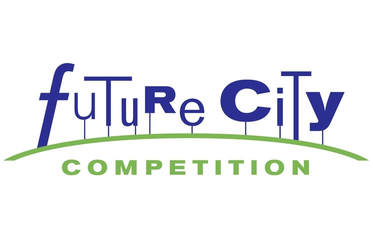Future City Engineering

Do you love to play Sim City?
Do you enjoy building scale models with recycled materials?
Do you think about the future of the planet?
Compete in Future City Engineering, and design a city of the future!!
The competition has several components:
Play Sim City!
Write an essay and narrative!
Build a scale model of your city!
Present your ideas to a panel of judges at Regional Competition!
At least three students are needed to form a team, and you'll need an engineer mentor.
Stay tuned for more information about upcoming informational meetings on our campus. Check the following website for more information about the Future City Engineering program: www.futurecity.org
The Regional competition will be held at UT Arlington on January 26, 2019
The Future City Engineering sign-up form can be found below:
Do you enjoy building scale models with recycled materials?
Do you think about the future of the planet?
Compete in Future City Engineering, and design a city of the future!!
The competition has several components:
Play Sim City!
Write an essay and narrative!
Build a scale model of your city!
Present your ideas to a panel of judges at Regional Competition!
At least three students are needed to form a team, and you'll need an engineer mentor.
Stay tuned for more information about upcoming informational meetings on our campus. Check the following website for more information about the Future City Engineering program: www.futurecity.org
The Regional competition will be held at UT Arlington on January 26, 2019
The Future City Engineering sign-up form can be found below:
| future_city_engineering_2018-19.pdf | |
| File Size: | 51 kb |
| File Type: | |
2018-19 Challenge - Powering Our Future
Natural disasters—such as earthquakes, tornadoes, or hurricanes—can pose serious threats to cities. While these events rarely last longer than a day or two, the damage can severely disrupt people’s daily lives, especially for exposed and vulnerable populations, and dramatically worsen the rebuilding process.
Examples of this are the earthquake and tsunami that hit northeastern Japan in 2011 and Hurricane Maria’s direct hit on Puerto Rico in 2017. Japan lost key sources of electricity, requiring rolling blackouts to millions of businesses and homes for months, which made manufacturing and home living very difficult. Puerto Rico had 80% of its power lines wiped out with a complete loss of the electrical grid—leaving small generators as the only way to power everything, including hospitals, airports, police stations, and cell phone towers.
Today’s engineers, architects, and city leaders face the critical task of creating resilient cities. A resilient city is one that can adapt to challenges. It has connected systems and infrastructure in place that limit damage and help the city recover quickly. Physical systems such as infrastructure and housing are built to withstand high winds or earthquakes, information systems such as zoning data and maps are designed to support relief efforts, and institutions such as city management or emergency response are developed to ensure the quickest possible recovery. A resilient city ensures its residents are safe and healthy, their communities are stable and cared for, and the economy of the city is strong and durable.
The students’ challenge: Design a resilient power grid for your future city that can withstand and quickly recover from the impacts of a natural disaster.
Natural disasters—such as earthquakes, tornadoes, or hurricanes—can pose serious threats to cities. While these events rarely last longer than a day or two, the damage can severely disrupt people’s daily lives, especially for exposed and vulnerable populations, and dramatically worsen the rebuilding process.
Examples of this are the earthquake and tsunami that hit northeastern Japan in 2011 and Hurricane Maria’s direct hit on Puerto Rico in 2017. Japan lost key sources of electricity, requiring rolling blackouts to millions of businesses and homes for months, which made manufacturing and home living very difficult. Puerto Rico had 80% of its power lines wiped out with a complete loss of the electrical grid—leaving small generators as the only way to power everything, including hospitals, airports, police stations, and cell phone towers.
Today’s engineers, architects, and city leaders face the critical task of creating resilient cities. A resilient city is one that can adapt to challenges. It has connected systems and infrastructure in place that limit damage and help the city recover quickly. Physical systems such as infrastructure and housing are built to withstand high winds or earthquakes, information systems such as zoning data and maps are designed to support relief efforts, and institutions such as city management or emergency response are developed to ensure the quickest possible recovery. A resilient city ensures its residents are safe and healthy, their communities are stable and cared for, and the economy of the city is strong and durable.
The students’ challenge: Design a resilient power grid for your future city that can withstand and quickly recover from the impacts of a natural disaster.